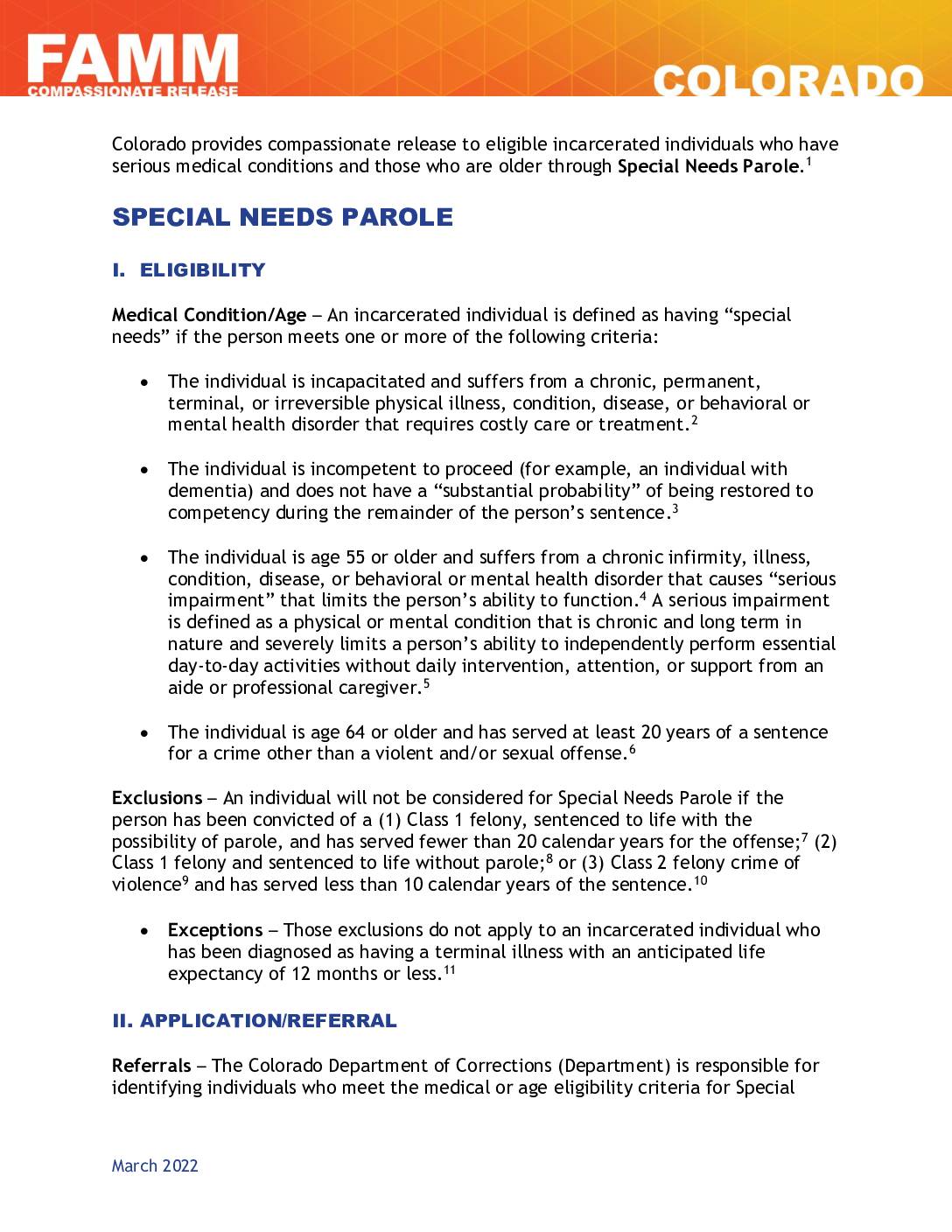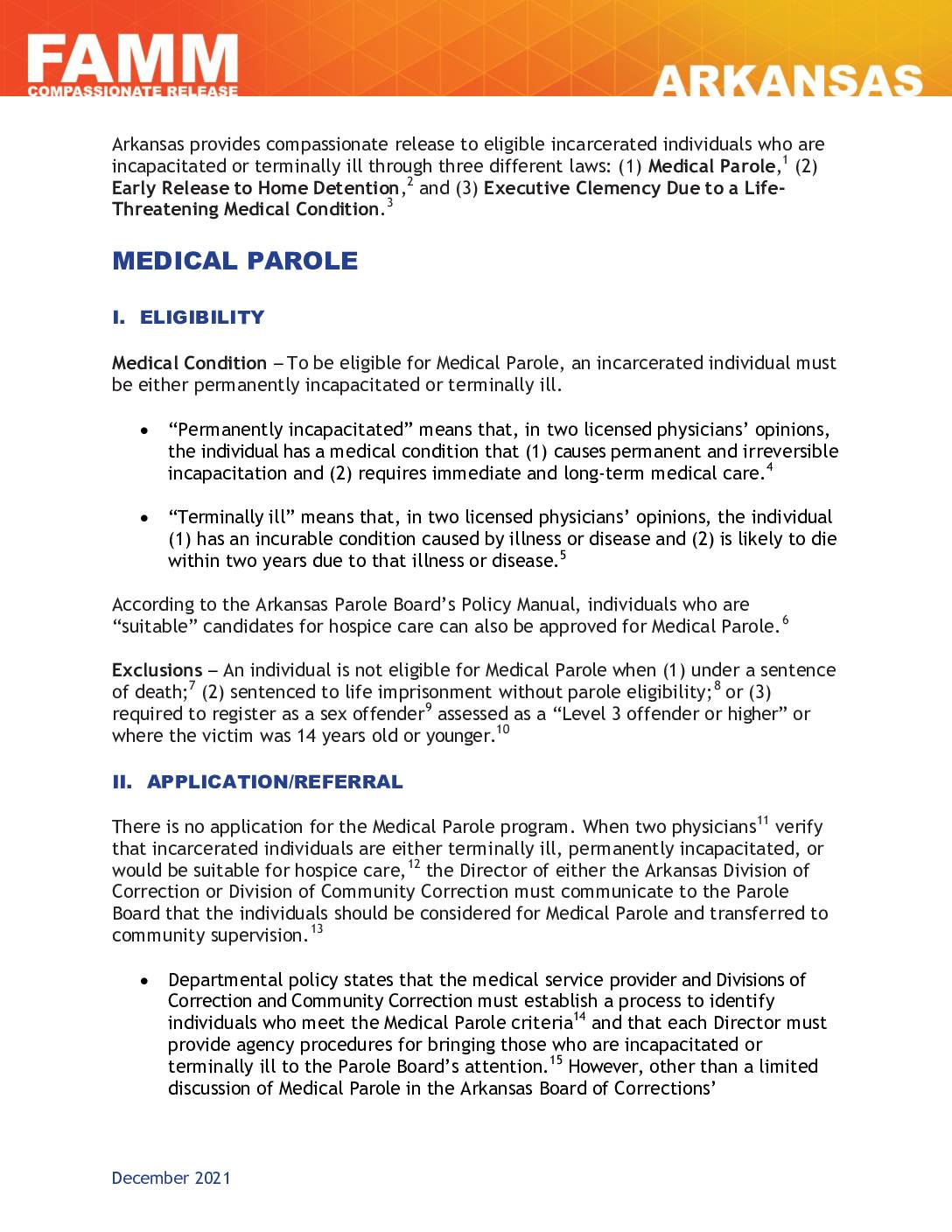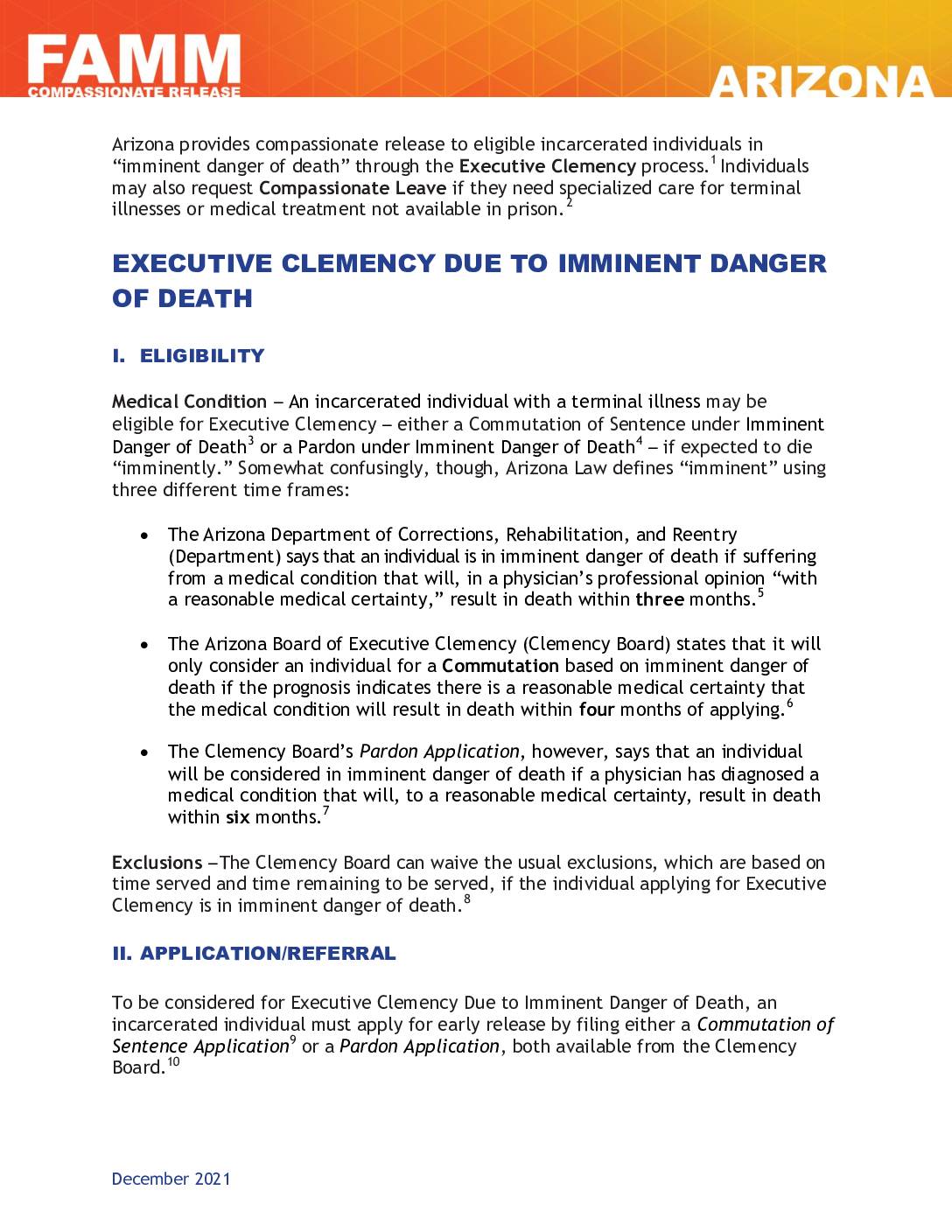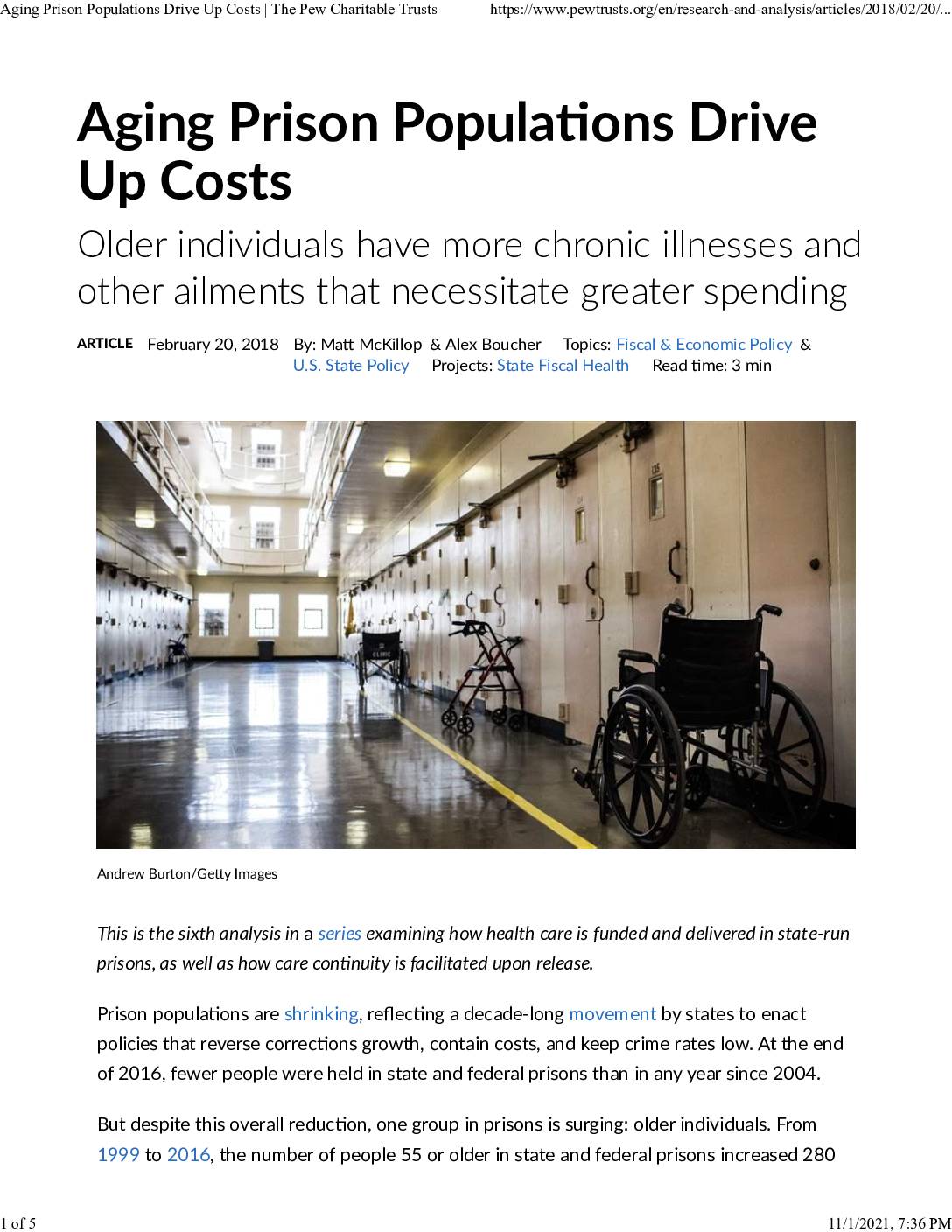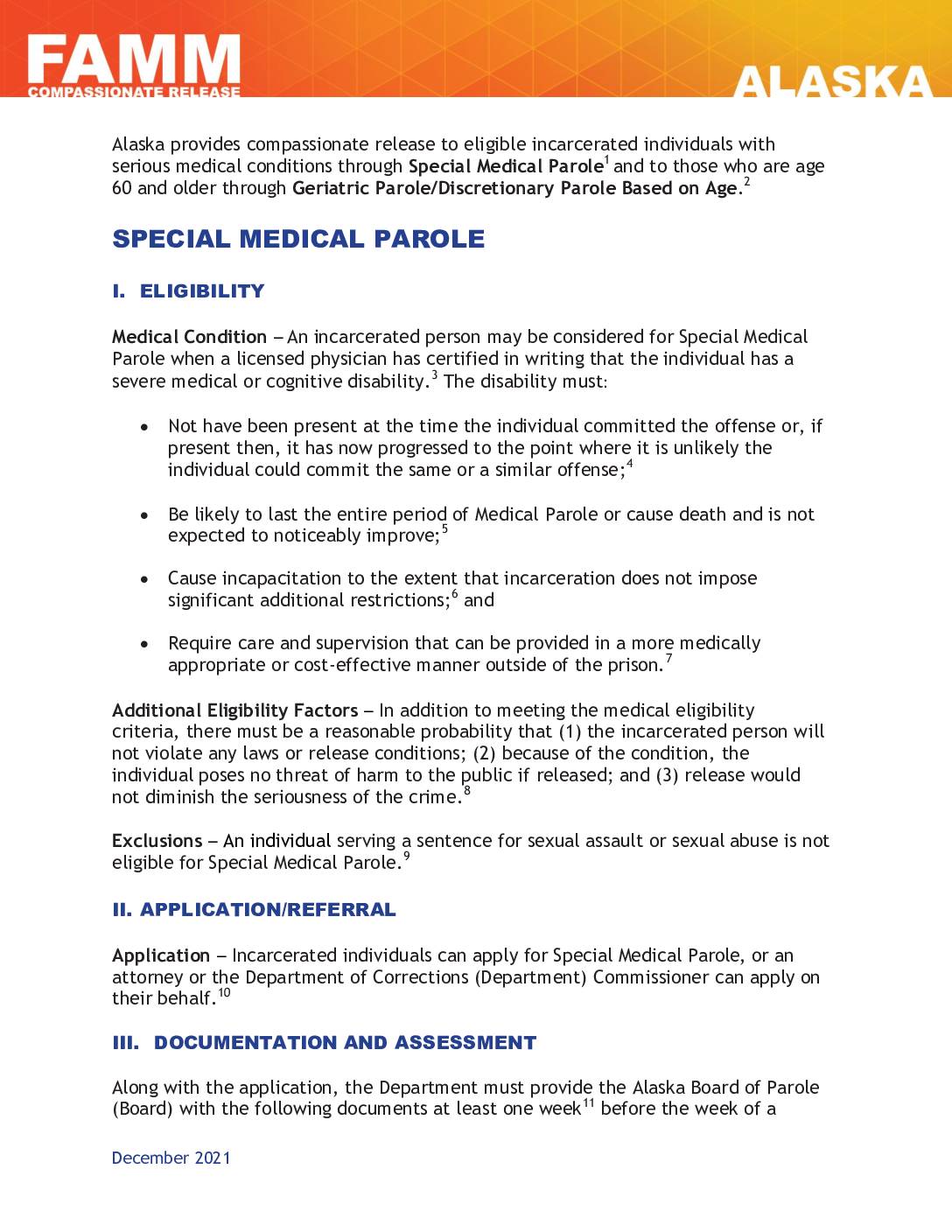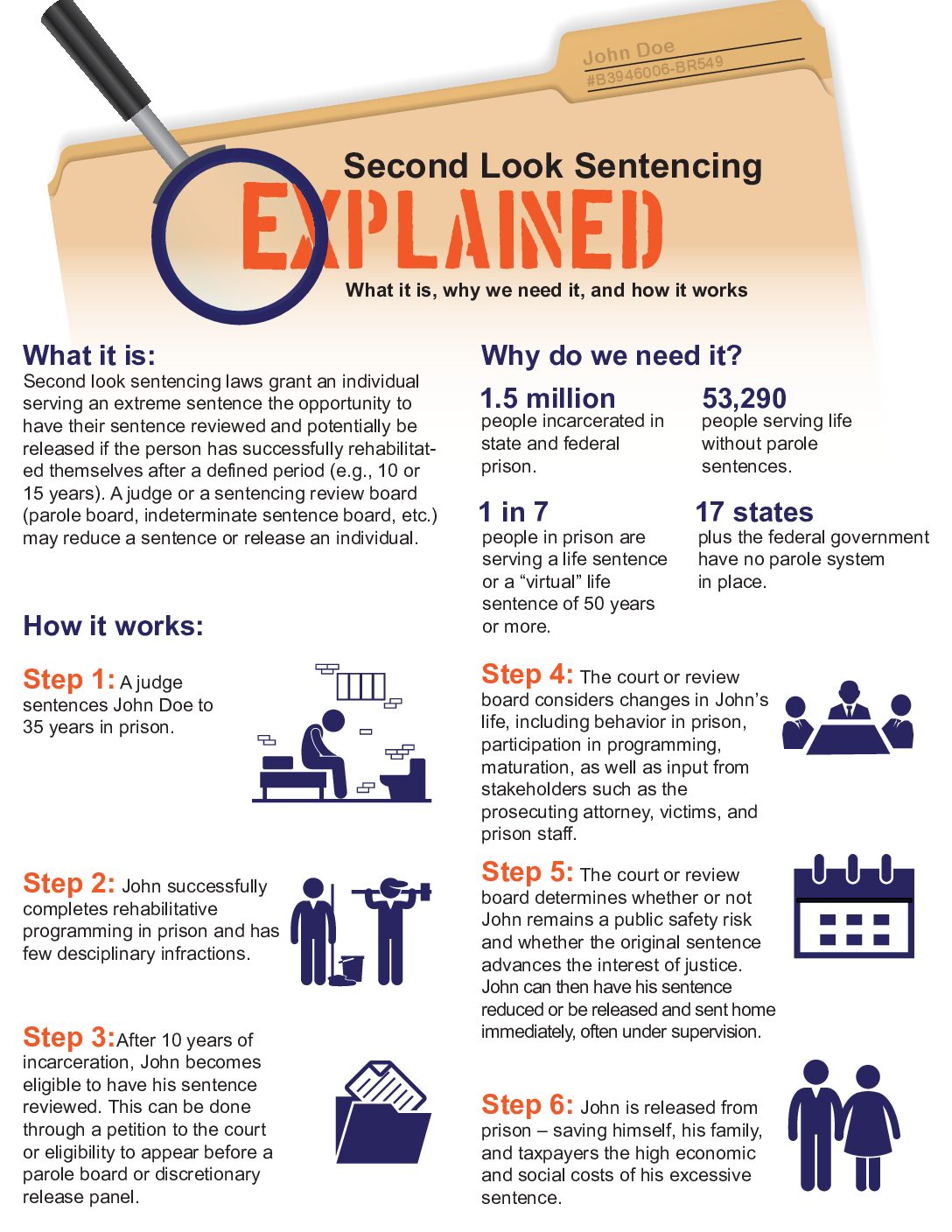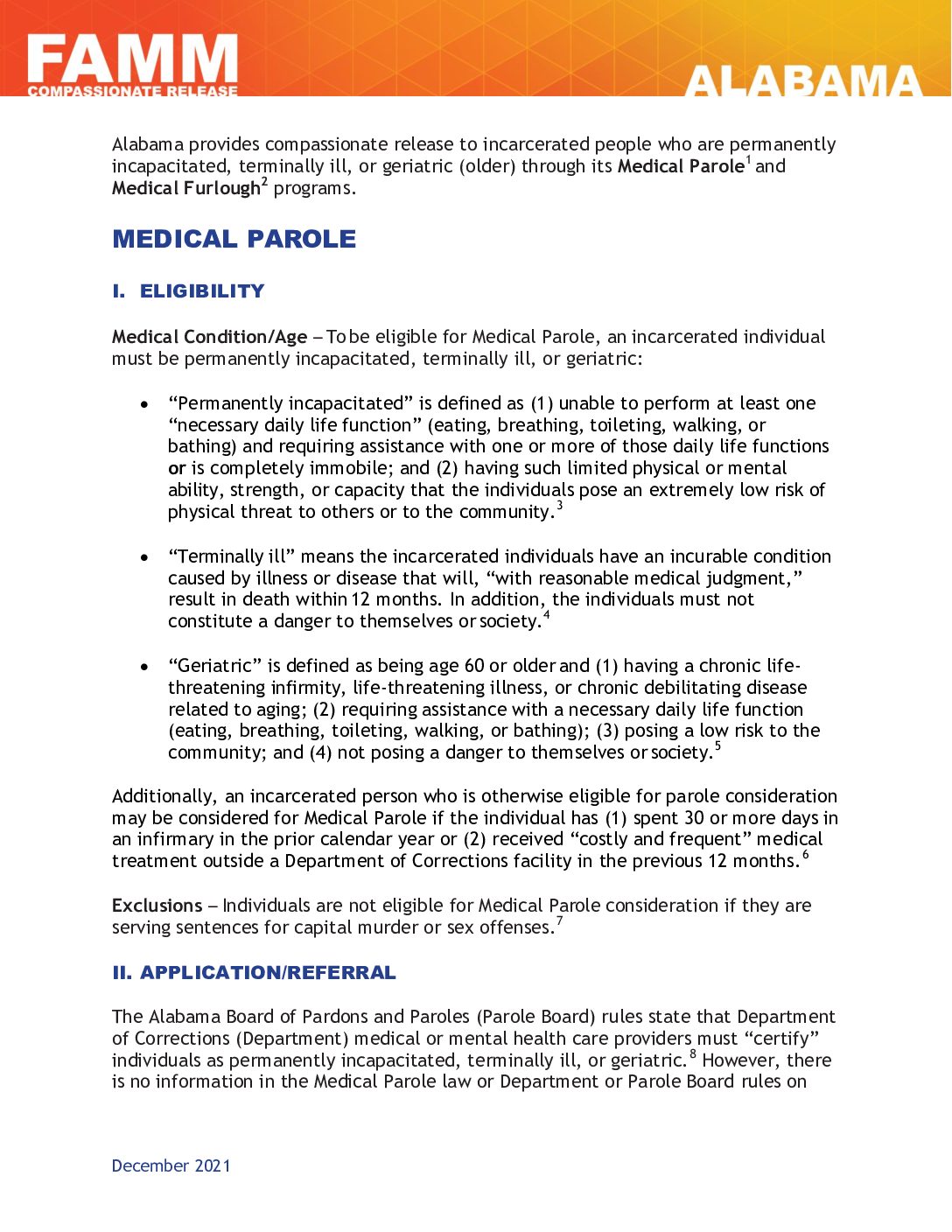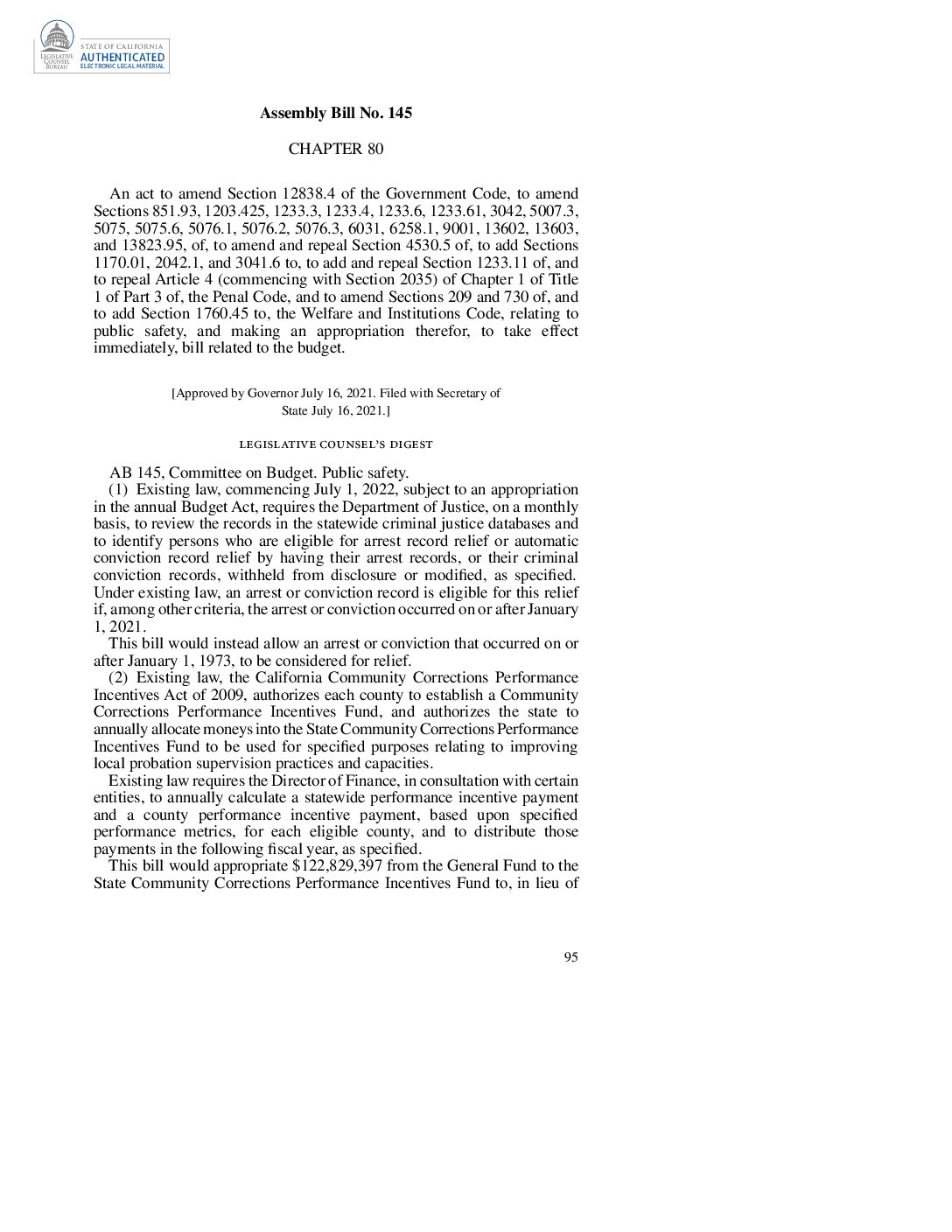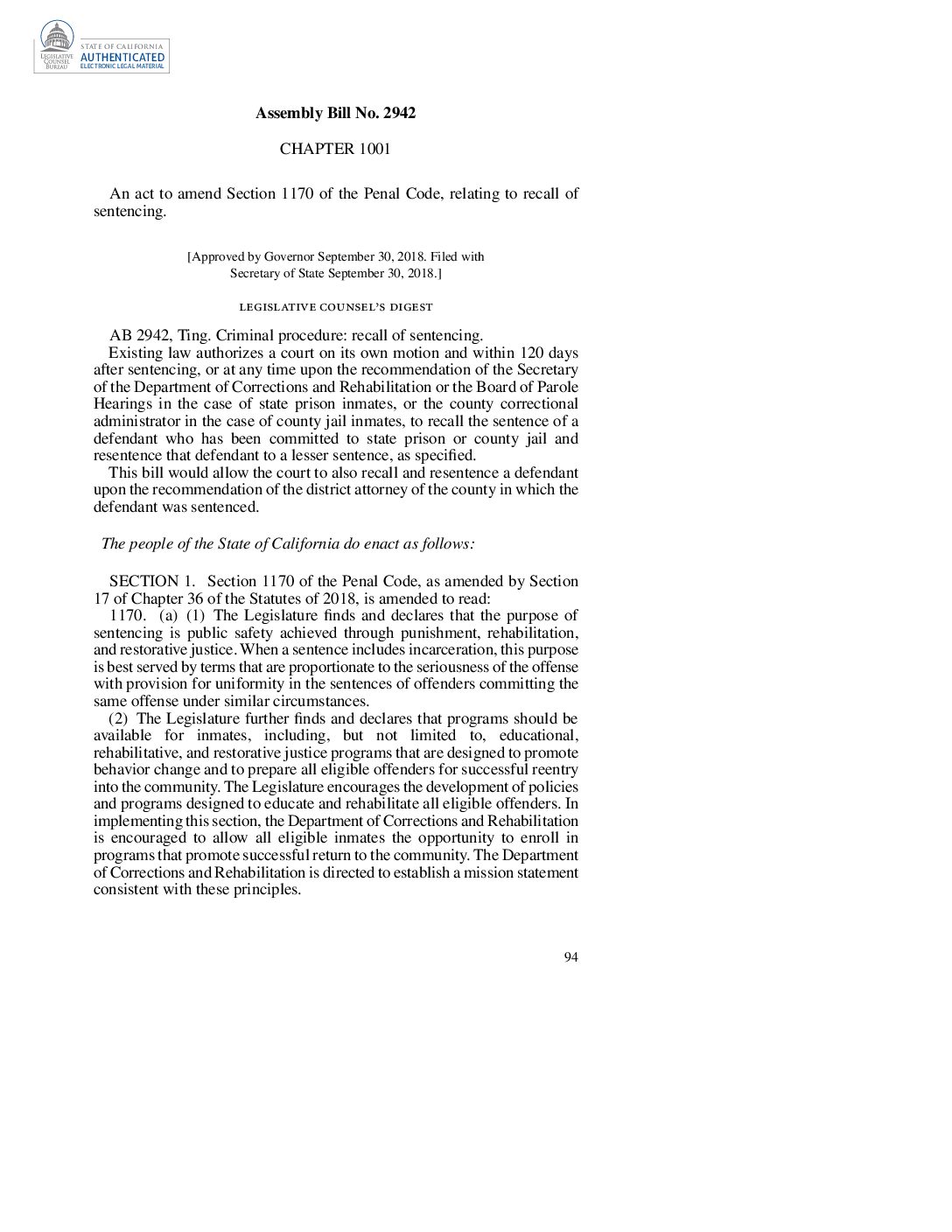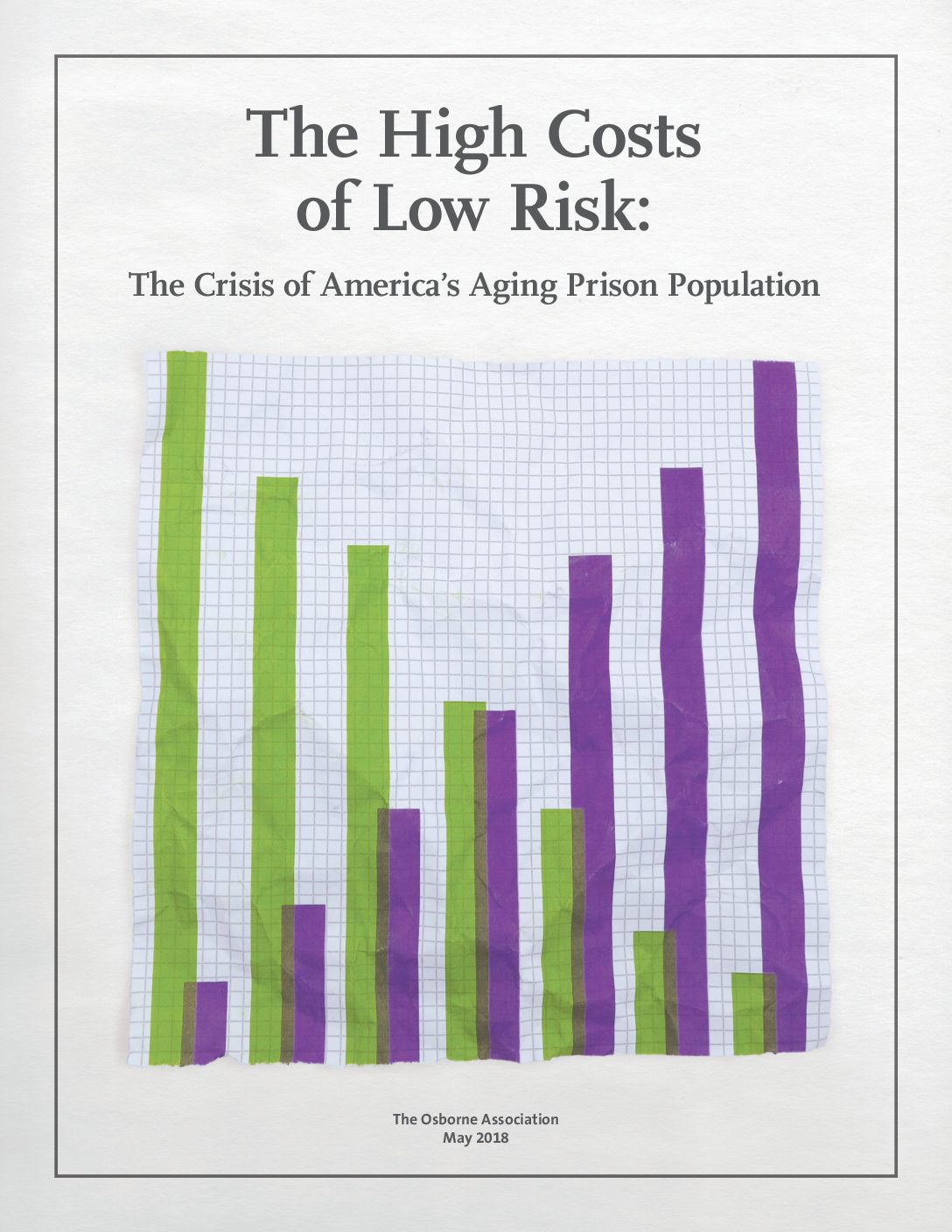PDF Everywhere and Nowhere: Compassionate Release in the States – Colorado
Colorado provides compassionate release to eligible incarcerated individuals who have serious medical conditions and those who are older through Special Needs Parole. This memo summarizes the regulations and requirements of this program, including the categories of release, eligibility criteria, the decision-making process, post-decision topics, and reporting.


